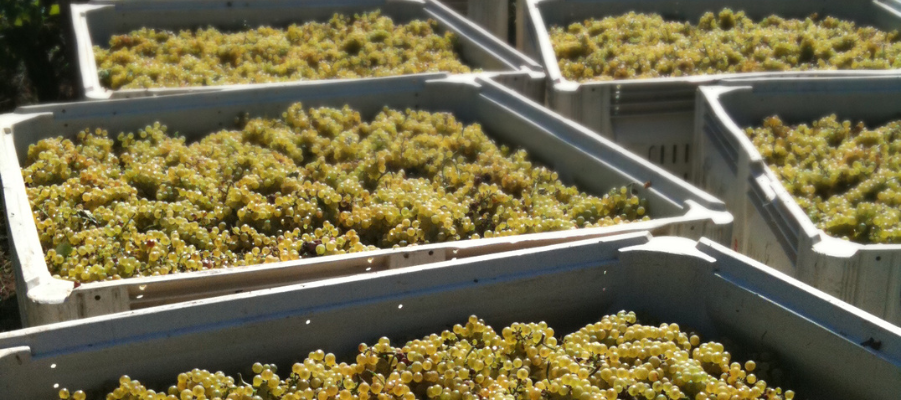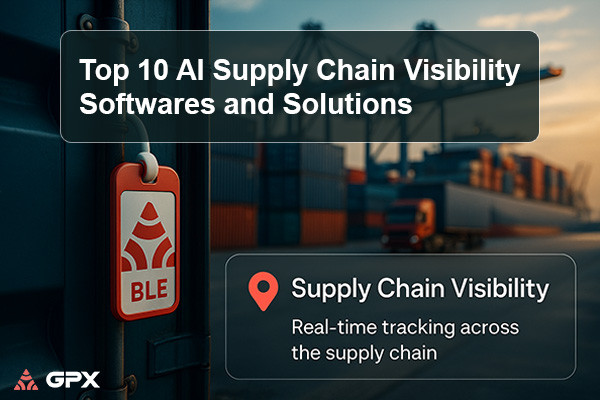Minimizing Cut-to-Cool Time: Optimizing Yields With Tracking Solutions

Cut-to-cool time is crucial when it comes to ensuring fresh produce shelf life. It’s the very beginning of the food supply chain, which lays the foundation for the entire lifespan of those harvested goods. Learn a little more about cut-to-cool time and how enhancing the process with tracking solutions can give your agricultural business a boost.
What is cut-to-cool time (CTC)?
In the world of agribusiness, ensuring that fresh produce reaches consumers in optimal condition is a top priority. One of the crucial steps in achieving this is at the very beginning: the cut-to-cool process. Simply put, the CTC time refers to the critical period between a crop’s harvesting and when it is cooled to optimal storage temperature.
The cut-to-cool process (sometimes referred to as “cut-to-cool time” or “harvest-to-cool”) is a methodical approach that preserves the quality and freshness of harvested crops from field to market. The end goal is to have the freshest produce for consumers in markets. A lot of the process depends on optimal storage temperature and general temperature control in agriculture, and those require consistent and efficient monitoring.
What are the key steps involved in optimizing CTC?
The clock begins ticking immediately after crops are harvested. To maximize yield, ag business’ primary goal is to minimize deterioration and preserve the nutritional value, flavor, and appearance of the produce. This process is particularly critical for delicate fruits and vegetables that are susceptible to spoilage and loss of quality due to heat and moisture.
The steps that follow include:
Harvesting. Farmers time the harvest to coincide with optimal freshness and ripeness. This ensures that the produce is at its peak when it enters its marketable lifespan. The cutting-to-cooling process tends to have the least empirical data by which to measure. As many business owners are aware, data offers the critical evidence needed in order for change to occur. With greater automatically-captured data upon harvest (such as location and timestamps), the more this can be correlated and tested against the processes used in the field.
Immediate Cooling. After harvesting, the produce is quickly cooled to reduce its temperature. This step slows down metabolic processes such as respiration and microbial growth, which are responsible for spoilage. Once again, location and timestamp information along with geofencing around the cooling system help provide immediate information on the efficiency of the time a harvest crate spent in the field, to when it arrived for cooling.
Temperature Control. Maintaining a consistent and controlled temperature environment is crucial. This is typically achieved using refrigeration or cooling systems that regulate the temperature and humidity levels specific to each type of crop. This is where GPS and environmental tracking technology can help. Making sure you know exactly where your products are and their environmental conditions gives you a clearer picture of their freshness and longevity.
Packaging. Once cooled, the produce is carefully packed to protect it from physical damage and contamination. Packaging materials and techniques are chosen to provide adequate ventilation and protection during transportation and storage.
Transportation and Storage. Proper handling during transportation and storage is essential to prevent temperature fluctuations and maintain freshness. Additional tracking during the cold chain logistics process can help ensure that the produce remains at the optimal temperature throughout its journey to market.
Year to year, global food traceability becomes easier and easier because of developing technology. Companies have turned to these technological solutions—like GPS tracking—to enhance their logistics, improve customer outcomes, and save money.
Why is CTC time so important to leaders in agriculture?
Produce shelf life varies from one store to another, as well as within each store itself. A recent study conducted by Zest Labs concluded that produce freshness varied significantly from store to store, leading to early spoilage. When the supply chain is interrupted so much right at the end, consumers are the ones affected, which can lead to losses in profits and customer confidence. Furthermore, many customers noted that a lot of produce, like romaine and bag lettuce, would seem fine at the store but spoil pretty quickly once home.
Another key problem that results from less-than-desirable CTC times is colossal amounts of food waste. If consumers don’t purchase or return spoiled produce, it is usually discarded. It has been shown that consumers value freshness as a key indicator of where they will continue to shop. So for stores like yours, ensuring this process with developing technology helps both reduce waste and save money.
What are the benefits of the CTC process?
The CTC process is designed to ensure the most efficient cooling of produce for maximum shelf life freshness. Such field-to-fork logistics have been honed over the years to best provide stores and store owners with fresh, robust produce for consumers.
The benefits of the CTC process can be broken down into three major categories:
Preservation of Quality. By quickly reducing the temperature of harvested crops, the cut-to-cool process helps retain their flavor, texture, and nutritional content.
Extended Shelf Life. Proper cooling and temperature control significantly extend the shelf life of perishable produce, reducing waste and maximizing market availability.
Consumer Satisfaction. Consumers receive fresher and higher-quality produce, enhancing their overall satisfaction with the product.
Specifically, growers and farmers try to shoot for their CTC time to be two hours or less. However, a lot of factors can cause delays. Equipping yourself with new technology designed to track your produce from farm to market is one way to ensure the freshest products when they arrive at consumers’ homes and on consumers’ tables.
Track harvest crates, bins, electronic cases, and vented, solid wall, or bulk cases with GPS technology. Know exactly where every piece of fresh produce is and maintain knowing how long it’s been since harvest.
How does tracking technology help optimize the entire food supply chain?
Leveraging technology such as GPS tracking can further optimize the food supply chain. GPS tracking technology provides real-time monitoring of not only location data, but can also provide temperature and humidity tracking. This is often applied in food delivery vehicles, ensuring that ingredients arrive fresh and are promptly stored or cooked. This capability not only enhances food quality but also contributes to sustainability efforts by reducing food waste and energy consumption.
Furthermore, GPS tracking can streamline logistics by optimizing delivery routes, thereby minimizing transportation time and ensuring that perishable items are delivered within optimal freshness windows. This integration of technology supports food safety initiatives by maintaining the integrity of ingredients from farm to table.
Continuous improvement of agribusiness supply chains
As food safety regulations evolve and consumer expectations rise, the importance of implementing robust food safety practices as well as the entire farm-to-store process, cannot be overstated. Adoption of innovative technologies like GPX Intelligence’s solutions will be pivotal in staying ahead of industry standards and meeting customer demands for safe, high-quality food products.
While the cut-to-cool process may seem like a small part of the fruit and vegetable agriculture supply chain, its impact extends far beyond the field. Consumers deserve fresh produce, and you deserve all the tools available to help deliver it.
Learn more about GPX’s Temperature and Humidity tracking solutions.


